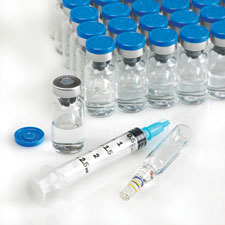Defining best biopharmaceutical practices is necessary to ensure the safety of the supply chain.
 Manufacturing biopharmaceuticals carries great responsibility. The drugs produced must be available when needed, effective for their intended purpose, and safe to use. At an operational level, it is vital that biopharmaceutical production is carefully controlled within defined parameters and there is no possibility of contamination. Suppliers share a commensurate responsibility, as the quality of raw materials has a direct impact on these goals. There is an acknowledged gap between current capabilities of many suppliers and what will be needed in the future to support the industry in an increasingly demanding regulatory and end-user focused market.
Manufacturing biopharmaceuticals carries great responsibility. The drugs produced must be available when needed, effective for their intended purpose, and safe to use. At an operational level, it is vital that biopharmaceutical production is carefully controlled within defined parameters and there is no possibility of contamination. Suppliers share a commensurate responsibility, as the quality of raw materials has a direct impact on these goals. There is an acknowledged gap between current capabilities of many suppliers and what will be needed in the future to support the industry in an increasingly demanding regulatory and end-user focused market.
This gap is especially true when the meaning of supplier is defined widely as any player including manufacturers and distributers along the inbound supply chain going up through the layers of tier 1, tier 2, etc., to the original source material. The scope of material is similarly broad: excipients, actives, reagents, and product contact materials must all be included. While tier 1 suppliers are largely reliable and aligned to needs of the pharmaceutical industry, there is a whole array of connected players that need to understand and adopt pharmaceutical best practices.
BPOG Checklist
The starting point for helping transform the inbound supply chain is to define and articulate what these best practices are and to set out a road map for their implementation. With this goal in mind, a BioPhorum Operations Group (BPOG) team comprising 20 leading biopharmaceutical manufacturers has been working collaboratively together to create a 10-point checklist with the intent of sharing it with the industry. The mindset of the manufacturers is one where they grasp the need to work cooperatively with the supply base and that the journey to supply excellence will be a long one.
Good manufacturing practices
Suppliers of raw materials need to understand what GMPs mean as they apply to the biopharmaceutical industry. Suppliers need to have a system for assuring the quality of their products in line with GMPs or an appropriate fit-for-purpose classification approach. Suppliers at all tier levels should similarly require their suppliers to understand GMP and have quality control systems that meet the needs of biopharmaceutical GMP. All suppliers need to appreciate the legal (regulatory) obligations that are placed on biopharmaceutical manufacturers including the control of raw materials.
Change notification and early warning
Suppliers at all points in the inbound supply chain must have a proper process for notifying their customers and hence, end users, of changes to raw material manufacturing. The timing of the notification must, if possible, allow end users to evaluate and plan for the effects of the change. ‘Changes’ are defined as anything that may impact end user product quality, manufacturability, or material availability. Change notification must include all planned (foreseen) changes and unexpected (unplanned) changes.
Elimination and control of sources of variation
Suppliers need to understand how variability in the manufacturing process affects the quality attributes of their product. They need to have tools that are fit for purpose, including measurement procedures for monitoring and controlling variation (e.g., tools and concepts such as statistical process control, process capability, and critical process parameters). Suppliers need to understand how eliminating sources of variation is crucial for continuous improvement. They need to understand how variability in raw material quality can have a significant downstream impact on bioprocessing capability and biopharmaceutical product safety.
Traceability, visibility, and transparency
Suppliers need to understand that the origin of all materials flowing through the inbound supply chain needs to be entirely visible to intermediaries and end users in pharmaceutical manufacturing. The source and time of supply for individual batches need to be traceable so out-of-specification (OOS) situations and adverse events are managed. All players in the raw material supply chain must have an attitude of openness so that problems can be identified and resolved. Suppliers must be ready, willing, and able to participate in supply-chain mapping exercises to enable transparency. End users need to be equally open and clear to ensure that suppliers can provide their guidance as to the effective use of the raw material.
Effective (root cause) investigation approaches and tools
Suppliers need to commit to the notion that identified issues (e.g., contamination events, OOS situations, and manufacturing deviations) must be investigated to identify a root cause, possibly by going back several steps in the supply chain. They need to have capabilities and processes for participating in (multi-company) root-cause analysis and investigations. Suppliers need to understand and apply the concept of corrective action preventive action (CAPA), and they need to be able to produce information and reports to support the paperwork trail.
Scientific risk management
Suppliers must have the capability to use risk-management approaches to assess and manage risks in their own business. They must be willing and able to participate in risk assessments with customers and end users on a technical and business level. Suppliers must understand their own process and its part in the supply chain, what risks there are and how to mitigate those risks as they impact end-user manufacturing and potentially cause harm to the patient.
Deep data capture and analysis
Suppliers must have robust systems and tools for collecting data in their production processes and the causes of variation. They must be open to sharing these data with customers and end users and to driving continuous improvement. Suppliers need to understand how data capture in the manufacturing process can be a source of value and competitive advantage in the pharmaceutical context.
Comprehensive (and electronic) information and knowledge flow
Suppliers need to understand that product and process data over and above that shown on a certificate of analysis are needed by end users. They must understand the importance of proactive trending of product and process data and its relevance to the control of quality. Suppliers must be able to provide data in a standard electronic format and transfer data where appropriate to customers and end users.
Fit-for-purpose specifications
Suppliers must be open to working with end users to align material specifications. They need to help end users maximize the use of standard specifications and to minimize customized specifications. Suppliers must understand why end users need to drive toward ‘zero particles’ in raw materials and cooperate in achieving this goal. Knowledge, understanding, and dialogue are foundations for success.
Patient-centered organization culture
Suppliers need to appreciate the intended use of the medicinal and therapeutic products that their raw materials have been used to produce. They need to understand the role that their materials have played and be able to judge their responsibilities in this context. The employees of suppliers should be provided with this information. The management in suppliers must demonstrate appropriate leadership behaviors.
The meaning of each point requires definition and explanation. Capabilities will need to be developed and tools and techniques learned. The drivers for change are powerful and unrelenting, but biopharmaceutical companies are ready for the challenge.
At some point in the not too distant future there will be two types of suppliers: those that understand and have adopted biopharmaceutical raw material manufacturing best practice and those that no longer supply the industry.
About the Author
 Simon Chalk is director of the BioPhorum Operations Group, [email protected]
Simon Chalk is director of the BioPhorum Operations Group, [email protected]